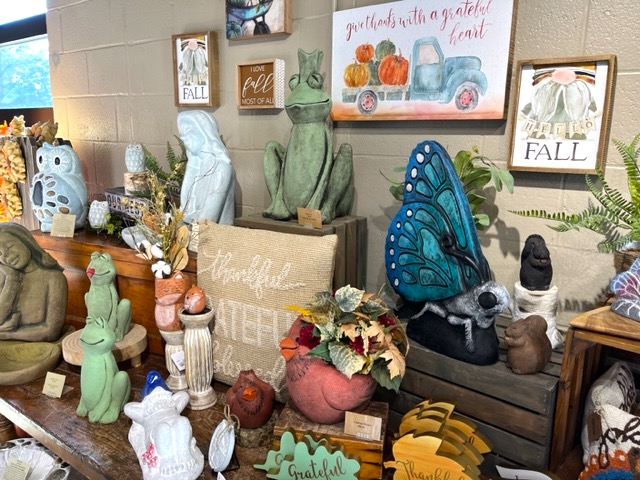
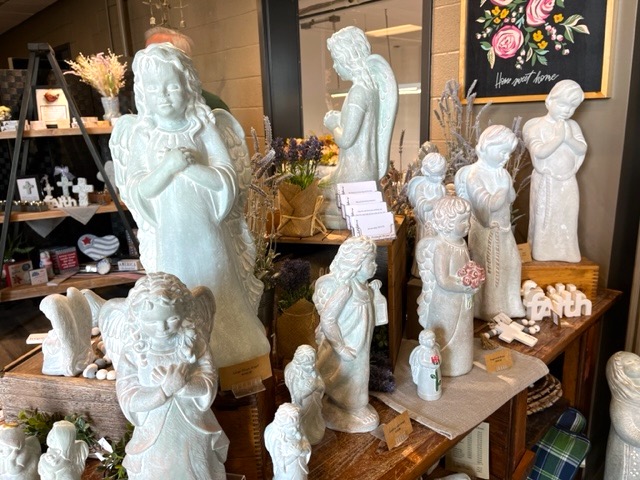
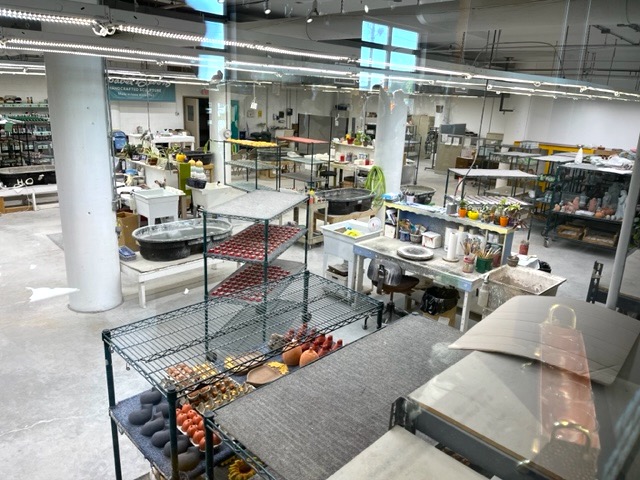
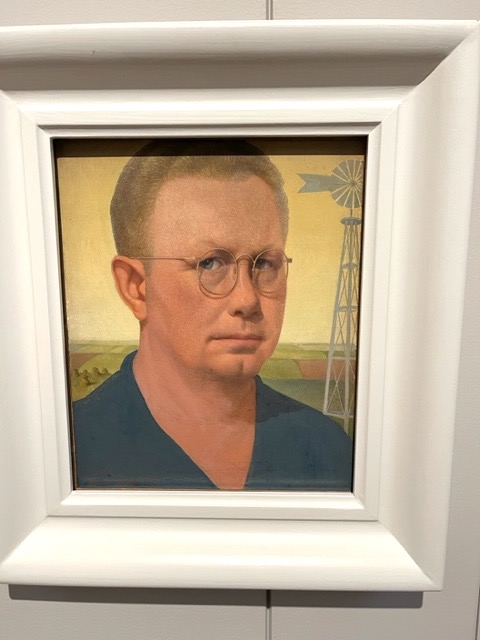
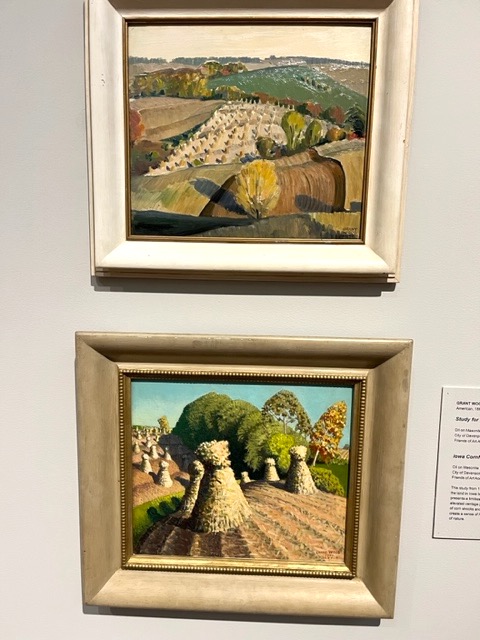
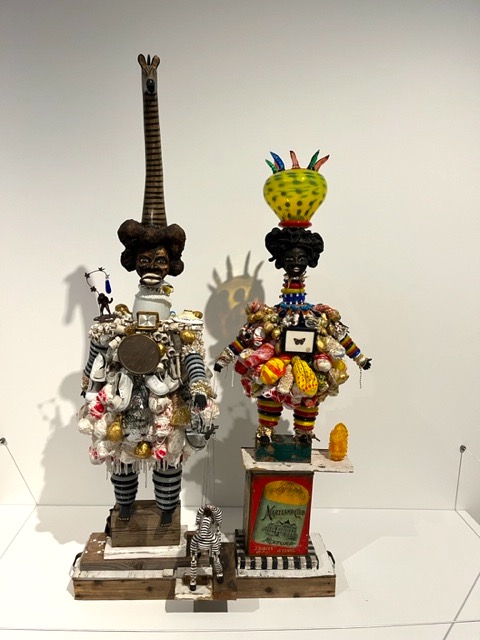
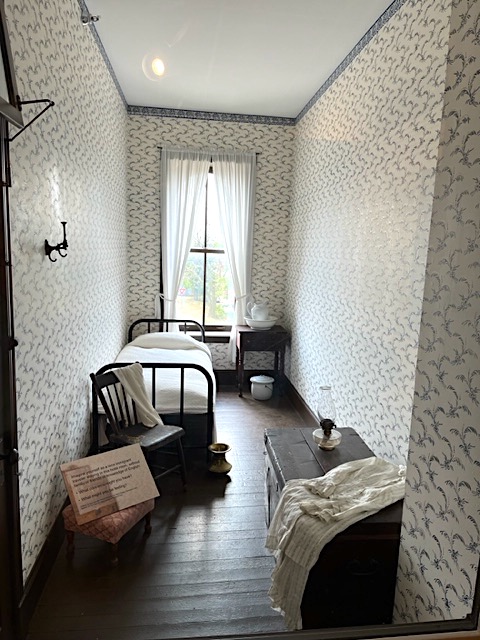
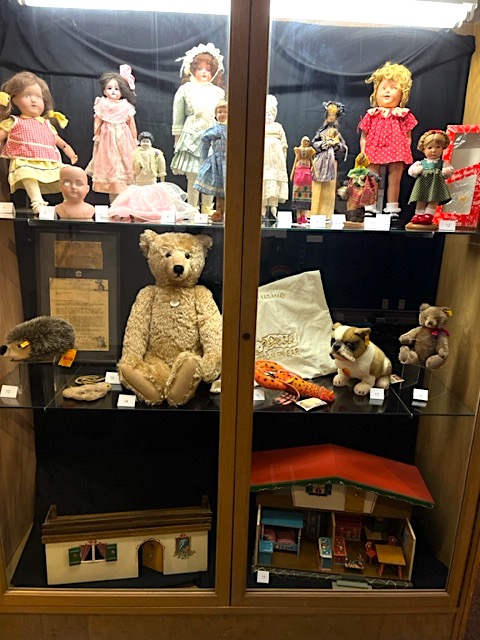
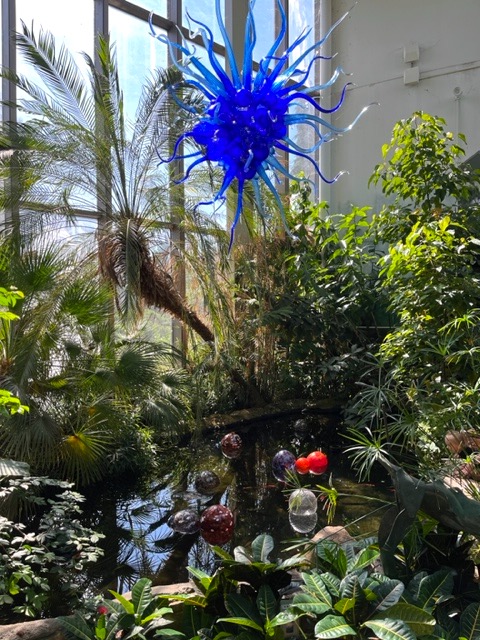
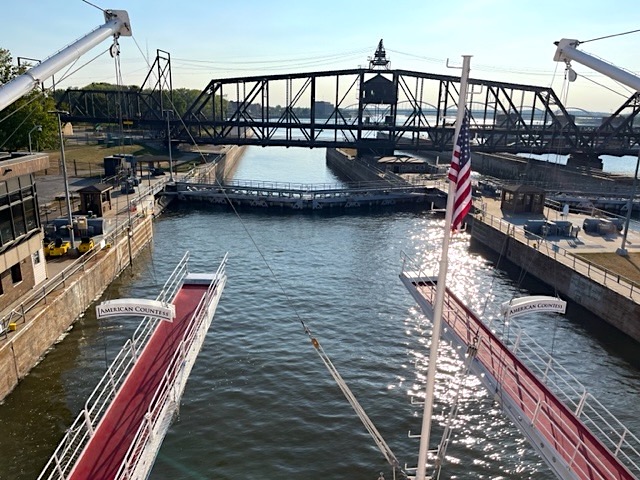
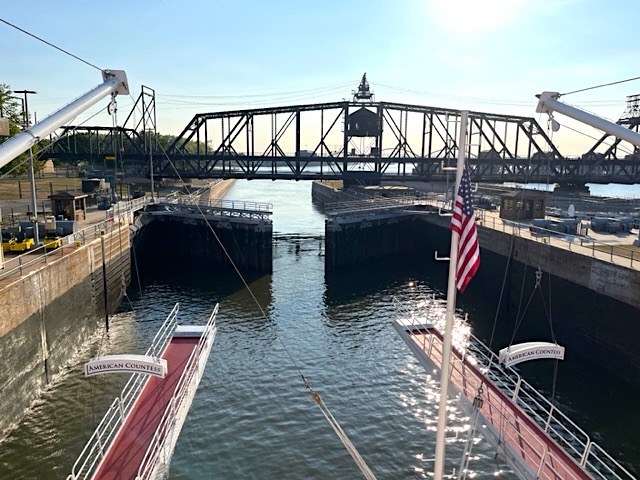
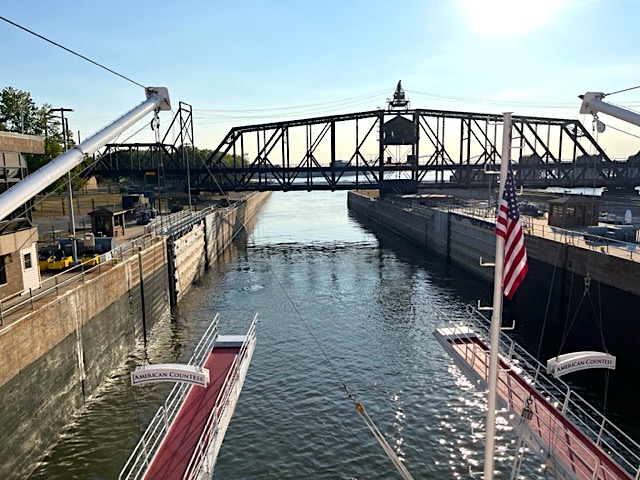

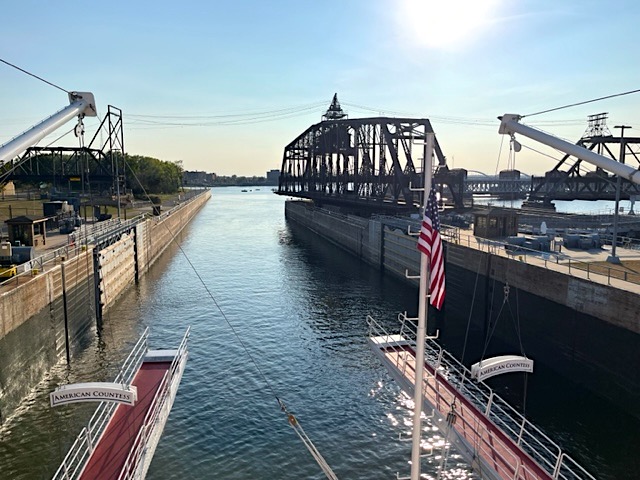
The weather was sunny and warmer on this day, climbing to about 80 degrees. Bettendorf, with a population of about 40,000, is one of the Quad Cities along with Davenport, Moline and Rock Island. Bettendorf is a relatively new city developed about 1900 when residents Willian and Joseph Bettendorf of Davenport, Iowa, were given 70 acres of riverfront land near what was at that time the town of Gilbert, with the condition that they move their iron wagon business out of Davenport. In 1903 the 450 or so residents petitioned for incorporation and requested that the town name be changed to Bettendorf in honor of the brothers whose factory was a major economic influence in the early development of the city. In the late 1940’s ALCOA, the Aluminum Company of America, chose Bettendorf as the site for the worlds largest aluminum mill. This created thousands of jobs and quickly increased the population of Bettendorf.
Our first stop of the day was at the Isabel Bloom Sculpture Studio where we had a tour and a demonstration. Born Isabel Rose Scherer in Galveston, Texas, in 1908, her family soon moved to Davenport where she was raised and lived her entire life. After graduation Isabel would study briefly at the Art Institute of Chicago as well as at the Vogue School of Fashion where she developed a love for dress making. After returning to Davenport Isabel taught for Singer and opened her own dress design business. Davenport, not being the dress capital of the world and Isabel, not wanting to move to the big city, closed her business and found a job as a receptionist at a doctor’s office.
In 1932 a visit to an art colony in Stone City, Iowa, would change her life. 90 students were offered room and board as well as a variety of art classes in drawing, painting and sculpting for six-week terms at a cost of $100. It was here that Isabel learned to carve limestone flawlessly. Here Isabel would also meet her husband to be, John Bloom, who was an accomplished artist.
Throughout her life Isabel continued to expand her sculpting abilities and she became a prominent artist in Davenport. She was well known for her garden art created with concrete. During a guided video tour, we learned about the steps in making Isabel’s wet concrete garden sculptures and got the chance to see many of her original works of art. Today the studio is owned by her protégé and fans of her sculptures and they continue to bring her sculptures to life.
Next up was the Figge Art Museum, home to one of the Midwest’s finest art collections within a unique glass building designed by British architect David Chipperfield. The museum is known for its traveling art exhibits, special events, art classes and lectures. On this day they were even having a yoga class in the lobby of the museum. We did get to see several of Grant Wood’s original works of art including a self-portrait.
At the German American Heritage Center, founded in 1994, we learned about the unique German immigrant experience. They have a large permanent exhibit and two rotating exhibits, as well as an orientation theater. They teach about the immigrants journey by sea, train, and foot to their final destination at what was once a busy local hotel for thousands of immigrants to the area in the 1860’s. On this day they were hosting a fall craft fair with local artists who were selling everything from jewelry to jam and from wooden pumpkins to handmade sweets.
Lastly, Mark visited the Quad City Botanical Center where they exhibit exotic tropical flowers, a waterfall and reflecting pools. The outdoor gardens feature conifers, spring bulbs, colorful and rare perennials and more. These gardens host extravagant festivals, parties and events throughout the year. On this day they were having a wedding with a couple of hundred guests. There is also an extensive children’s garden area with water features, streams and things for kids to do. In the front of the center there is a miniature train city built along the tracks. There was a volunteer operating the toy trains.
While Mark was at the botanical garden, Kent attended a Riverlorian lecture on the American Queen Countess vessel that we are sailing on. He heard about the history of the vessel, cost of the vessel, cost of remodeling the vessel, water capacity, etc.
After departing Bettendorf, we sailed south entering another lock and a swing span bridge. As the bridge opens and closes all pedestrians, cars and trains must stop so that our vessel can transit along the river. Many of the guests came out on the deck to watch this intriguing operation. The entire process takes about 30-minutes.
The evening’s entertainment was a question and answer session with Mark Twain, who was played by the same actor we saw several nights ago. They had intended to have a variety show on the program but it was changed so we suspected someone was sick. Mark Twain answered guests’ questions about his life, books, inspiration and family without missing a beat. Always clever, interesting and thoughtful.
